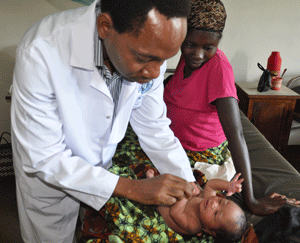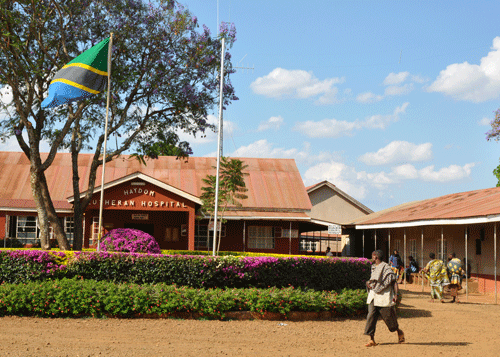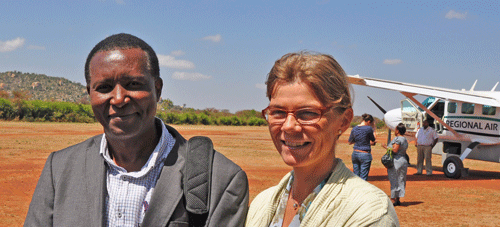Helping babies survive

A healthy baby is born in the Haydom Lutheran Hospital in Tanzania. She is given the name Precious and her proud mother is ready to take her back to the village. Many children born in the same hospital, or in other places in low and middle-income countries, are not as fortunate as Precious.
Dr. Robert Moshiro in Haydom's maternity ward is doing a medical check on Precious, before she leaves the hospital.
Moshiro is a Ph.D. fellow, in the innovation project Safer Births, financed by the Research Council of Norway, through the programme for Global health and vaccination research (GLOBVAC).
The aim of the researchers in this project is to develop devices and training programs that are culturally adapted, affordable, simple and durable.
98 percent of stillbirths and early neonatal deaths occur in low and middle-income countries. Several studies suggest that the majority of these deaths can be prevented with low -tech, affordable and easy-to-use tools and technologies, coupled with simple training programmes.
Remote, but popular
Haydom Lutheran Hospital is situated in a remote area in northeastern Tanzania. The wards are crowded and the hospital is lacking health personnel.
Still, the hospital has a good reputation and patients often travel for several hours in difficult conditions to be treated, or to give birth at the hospital.
The hospital is deeply involved in research and is active in research collaborations, both nationally and internationally. One of the ongoing research projects involving Haydom doctors and midwives is SaferBirths.
The critical minutes

"The overall aim of the project is safer births and to increase the survival of newborns", says the Norwegian principal investigator, Hege Ersdal from Stavanger University Hospital.
The key factors are to develop appropriate equipment, to develop a knowledge base and to involve health workers in appropriate training.
Ersdal explains that quite often babies are not able to clear their lungs for water, and have severe breathing problems after birth. The minutes after birth can be critical for those babies unable to breathe. The lack of oxygen can lead to brain damage and, in worst cases, death.
The "Safer Births"-researchers have developed a new type of resuscitator, making it easier for midwifes to resuscitate babies in need.
As part of the project, resuscitation monitors were installed in all labour rooms at Haydom hospital in 2013, and the midwifes are trained twice a week on how the new device is used.
Thorough these devices researchers can also collect data on newborn heart rate, ventilation volume, flow, pressure and expiratory CO2, which hopefully will enable them to advice in the establishment of international guidelines on resuscitation
The hospital has more than 300 resuscitations per year, and 1/3 of them has been recorded by the monitor and videotaped. The recordings give the researchers information on how the equipment functions in stressful settings; like when a baby is unable to breathe.

Researchers will analyse the data, as part of the goal of developing the optimal equipment and tailoring the best training programmes for the midwifes.
Reducing the workload
The researchers are also developing a portable foetal heart rate monitor. This is a small, but robust and simple instrument, meant to be very practical to use in low-resource settings.
"By doing frequent foetal heart rate measurements automatically, the workload is reduced and a foetus in distress is hopefully detected earlier. This monitor can also be interesting for high income-countries, for example in ambulances or during home births", Ersdal explains. The battery lasts for 10 hours and can also be charged by solar energy. The principal is that anywhere you can charge a cell phone, you can also charge the foetal heart rate monitor.
Midwives involved
Midwifes are highly involved in the project, and put forward their ideas in the development of the products. The project aims to build capacity among the maternity staff.
"We often have shortage of staff at the maternity ward, and sometimes it is challenging to motivate the staff for training", says Amina Omar, a midwife participating in the project. She still emphasizes that the project empower the midwives with new knowledge, and that the devices simplify their work. Omar's wish is that the midwives at Haydom could be even more encouraged to conduct research.
















